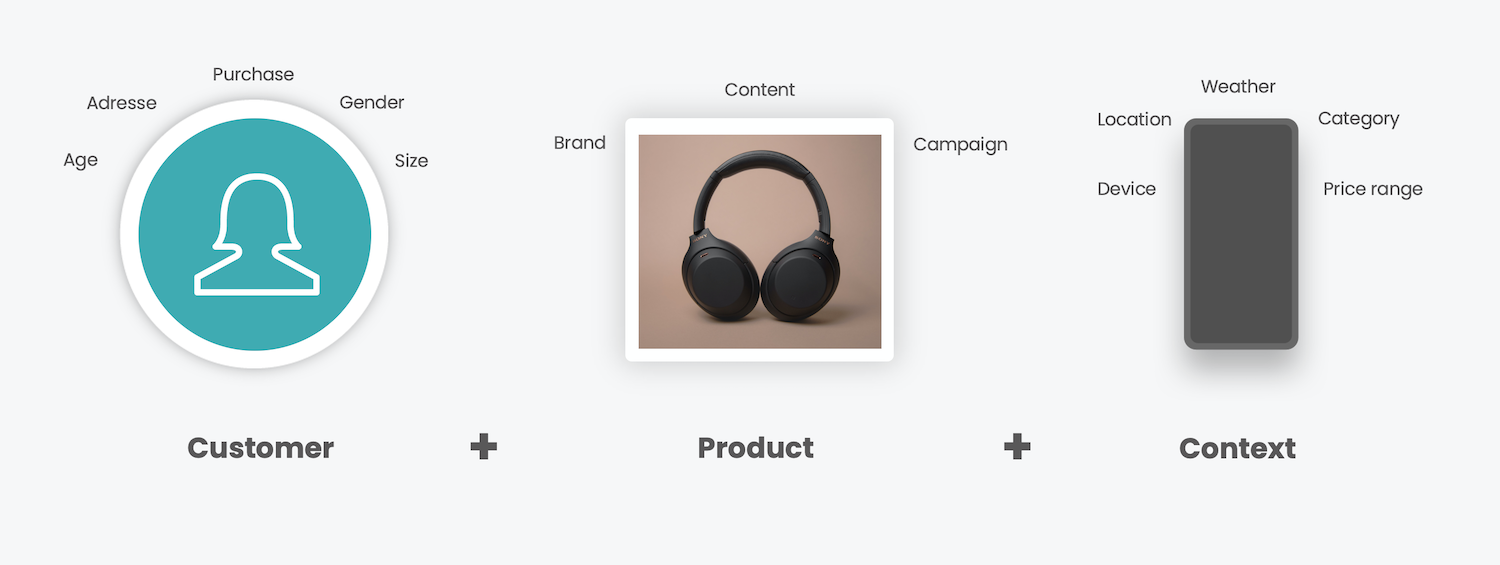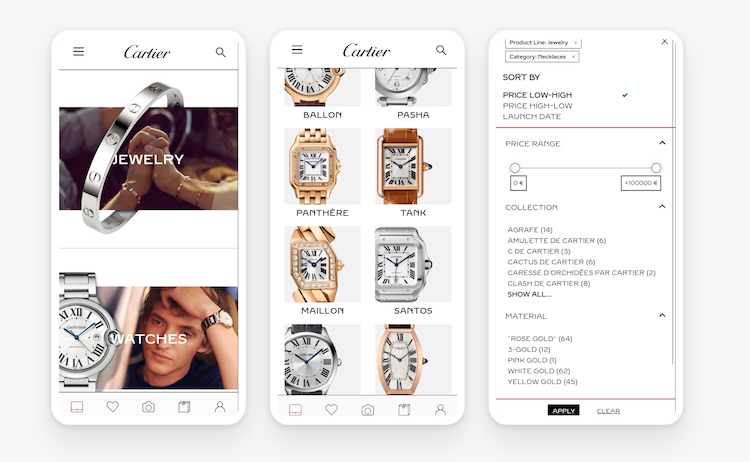For many retailers, the unified experience still only consists of showing in-store stock on the e-com site, or the ability to make an e-com order in a store. How can this be?
In my experience, coming from a background of 15 years consulting in the CX space, there is one major pain that has been blocking the possibility to unify the experience across the whole customer journey – and that is easy access to unified data and content. The capability to combine transactional, product, and campaign data with the customer profile and context in real-time has not been there … until now.
When you aim to build true unified customer experiences, you’re often restricted by data locked in silos and/or data scattered across many different sources. But luckily, there is a new kid on the block – the Experience Data Platform.
Empowering digital teams with access to relevant data is a big challenge today
If you look at the system landscape that builds up the different points of interaction across a customer journey, it is siloed! With siloed, I mean that you deploy a specific platform for each channel.
- A commerce platform to drive your online transactions
- A POS system for in-store transactions
- An external CMS providing content for a campaign site
- A Loyalty or Marketing automation system driving your e-mail marketing
- A customer service platform to empower your CS team.
- And behind it all you have a legacy ERP as a backbone, a CDP/CRM where you collect all the customer-related data, a PIM system as a master for your products, and a DAM where your assets team prefers to work – optimized for a limited set of concurrent users focusing on creating data.
This leads to a fragmented data landscape where data is locked in, limiting your creativity in developing new experiences. Every digital initiative tends to end up in an integration project! Many of these systems come with fixed data models that need to be extended and data to be mapped, requiring a custom integration every time, and the resolution of jamming all data into one platform dilutes data quality and loses context. Furthermore, often data is not easily available from older backend systems, requiring extra development efforts just to get data out to support the receiving system slowing you down even more.
We know by experience that on average 80% of digital CX project investments are spent on moving data around, leaving only 20% to work with the actual customer experience.
CX projects tend to be executed in silos, wasting money and time by doing the same thing again and again. To get access to the data your team or partner(s) repeatedly builds point-to-point integrations, moving data from one system into another.
In an earlier article, our CEO Niclas Mollin discusses the time-consuming and costly problem with building digital experiences, and how to fix it
Imagine if every interaction was truly optimized to the customer and the context
At Occtoo, we want to empower digital officers, marketers and developers at ambitious companies to reach a unified customer experience state, by combining a culture that is enabling a high pace of customer experience innovation, and a tool stack allowing them to be lightning-fast in bringing new digital tools and services to the market.

For a truly unified customer experience, your digital teams and your systems require easy access to your combined customer, product and context data.
Imagine if every digital or personal interaction with a customer was truly adapted to the context of the customer, independent of whether they are on their phone at home, on their phone in the store, in front of a digital in-store screen, or being supported by a sales rep or customer service agent. A journey where preferences, history, and situation of the customer are transparent across all channels, giving the insight to adapt the user experience, in terms products, campaigns, content, and transactional information that is displayed.
Imagine a product or campaign that dynamically adapts to each persona, by combining all the customer and contextual insights with the actual product content and campaign assets in real-time. We know that things can be better, faster to market, and can drive increased revenue: it’s time for change.
“If I’d have asked people what they wanted, they would have said a faster horse.” - Henry Ford
Now, with an Experience Data Platform like Occtoo, you and your team can ensure that the most relevant features and services are offered using customized UX for every specific interaction. And you are never limited to the predefined datasets supported by a channel-specific platform, or an integration team developing a custom solution, just to make your desired data accessible by the frontend team.
For more on this, watch the webinar with Occtoo CTO Jimmy Ekbäck. Jimmy discusses How to easily build relevant customer experiences for every context.
How to use your data to build unified customer experiences
Step 1: You must make sure you have a tech stack that doesn’t restrict your customer experience innovation.
In the fierce competition of customer’s attention, it is important that your team can bring great ideas to life quickly and easy. Even if it is simple things, such as, retargeting tactics that take product reviews into consideration, or e-mail marketing that utilizes customer service tickets, or more advanced scenarios like adapting your product details page content to each persona or offering an in-store check-in experience that considers customer context such as weather or nearby events. You NEED easy access to data.
Step 2: Embrace the fact there are innovative solutions out there that help you solve specific needs in the customer journey.
Don’t fear scattered data, just make sure you can easily access it anywhere when needed to prevent siloed experiences. There now are easy ways to bring it back together to make it usable everywhere.
Don’t waste time and energy on invaluable customizations, like replicating data models, or using these systems as backend-to-frontend proxies. Instead, give instant access to any data needed through purpose-built APIs and make your content come to life by infusing it with customer contextual and behavioural data in real-time.
Step 3: Stop wasting money on point-to-point integrations!
Bring that budget into enabling more tools, screens, and features driving customer engagement instead. Get more time to be creative with data, creating amazing, relevant, and innovative experiences rather than integrating data!
An Experience Data Platform is your answer to access, use and combine data
An Experience Data Platform sits on top of your system of records, turning your enterprise data into experience data. This platform unifies your data assets without the need for costly and time-consuming integration projects and makes the data available in real-time on a global scale, using real-time APIs, while at the same time collecting new data from your digital destinations. This solution empowers your teams to create purpose-built APIs, consisting of the specific combination of data assets you need to deliver timely and relevant information to a specific customer experience initiative or new application.
Easily re-use and re-purpose the data across screens/channels. Every time you have a new project in mind you just create a new Experience API with a click, to serve your next initiative with the exact data needed for that specific frontend and experience. As the number of channels/screens are exploding and growing exponentially this is the only way to manage this over time and at the scale expected by your customers.
By using Occtoo Experience Data Platform you can easily orchestrate your whole digital ecosystem of apps and digital destinations.
Occtoo X Cartier: Read how Cartier's in-store app empowered sales associates and enhanced customer experience



